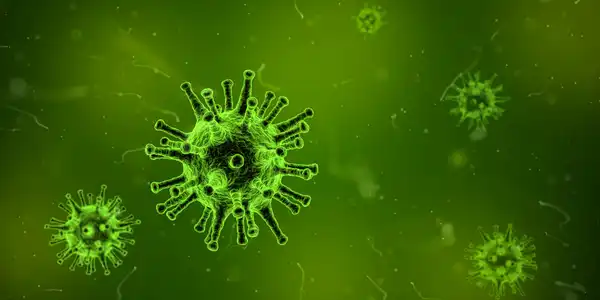
Everything you need to know about stem cells
What are stem cells, and what makes them so unique? What are the different types of stem cells, and how have they impacted modern medical science? Here is us answering all your questions about stem cells.

Most predators that we know of also serve as food for other organisms. In other words, most predators can be preyed upon. Take a spider for example. Spiders can predate on mosquitoes, but they are in turn eaten by lizards. This ensures the transfer of energy in the food web. However, there are some predators which we cannot imagine being preyed upon - Viruses are a good example for this. Considering the miniscule size of viruses, it is hard to imagine what possible nutrition any organism can obtain by eating them.
However, scientists are now wondering if viruses, when eaten in sufficient quantities, could act as a good source of nutrition for small, unicellular organisms. After all, viruses are made up of energy rich material, including fats and proteins. In a recent research paper published in PNAS, a group of scientists investigated if the unicellular, freshwater species, belonging to the Halteria genus, has the potential to grow its population by consuming a certain type of giant, freshwater virus, called chlorovirus (DeLong et al., 2022). These viruses are known to infect freshwater algae.
.jpg). A unicellular organism belonging to the *Halteria* genus. Credit: [Wikimedia](https://commons.wikimedia.org/wiki/File:Halteria_grandinella_-_160x_(14069352174).jpg).](/static/8f214e8075c2d1cd2e334df6711e41dd/80e3c/Halteria_cell.jpg)
A unicellular organism belonging to the Halteria genus. Credit: Wikimedia.
In order to check if the Halteria species could derive nutrition from chloroviruses, the group performed a simple, yet interesting experiment. They took a small drop of liquid with a known number of Halteria cells and treated these organisms with a known number of chloroviruses. They then recounted the Halteria cells and the chloroviruses after 1–2 days. To their surprise, they found that there was a robust increase in the number of the Halteria cells, accompanied by a decrease in the number of chloroviruses. They conducted the same experiment several times and concluded that these unicellular organisms were consuming and deriving nutrition from the chloroviruses, thereby helping them reproduce and increase in number.
To further confirm that the Halteria cells were consuming the viruses, they stained the chloroviruses with a green fluorescent dye. They then fed the Halteria cells these stained viruses. On observing the fed Halteria cells under a microscope that could detect fluorescent light, they found that the fluorescent green chloroviruses were now inside the Halteria cells. This confirmed that the Halteria cells were indeed eating the chloroviruses.
These results give us some previously unknown insights into the aquatic food web. Halteria and other similar unicellular organisms are eaten by bigger aquatic organisms. Interestingly, this means that the energy derived from the viruses also moves up the food web. Considering the amount of viruses we can find in water, the authors of the paper believe that this could account for a significant amount of energy.
Additionally, this discovery shows that virovory - where organisms eat viruses to derive energy, may actually be possible. This in turn means that these virus-consuming organisms can influence the evolution of viruses and their ability to cause infections. The research raises a lot of intriguing questions like - Could there also exist unknown predators for other, more dangerous, human viruses? If so, could we use these organisms to control the spread of infections? - Only further research can tell.